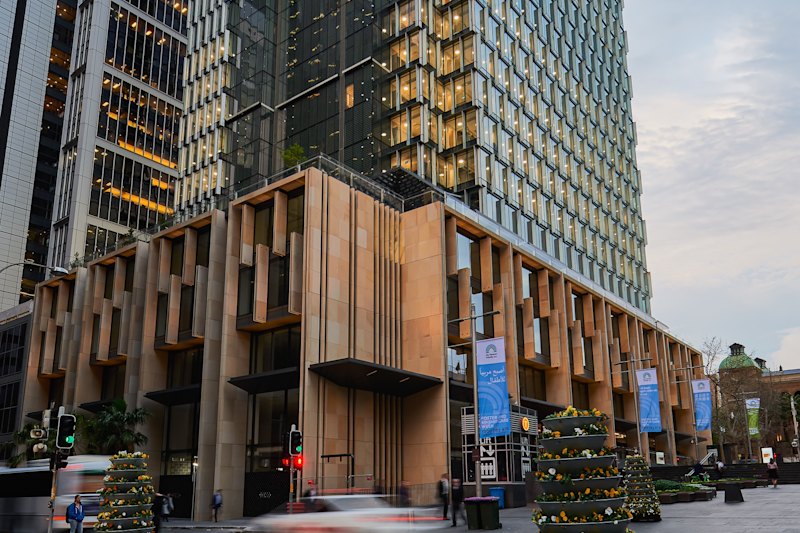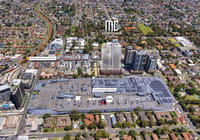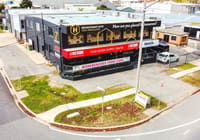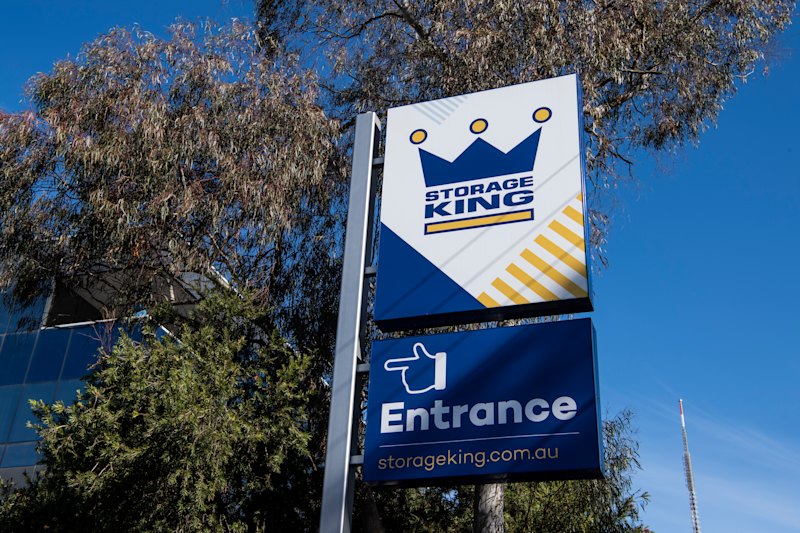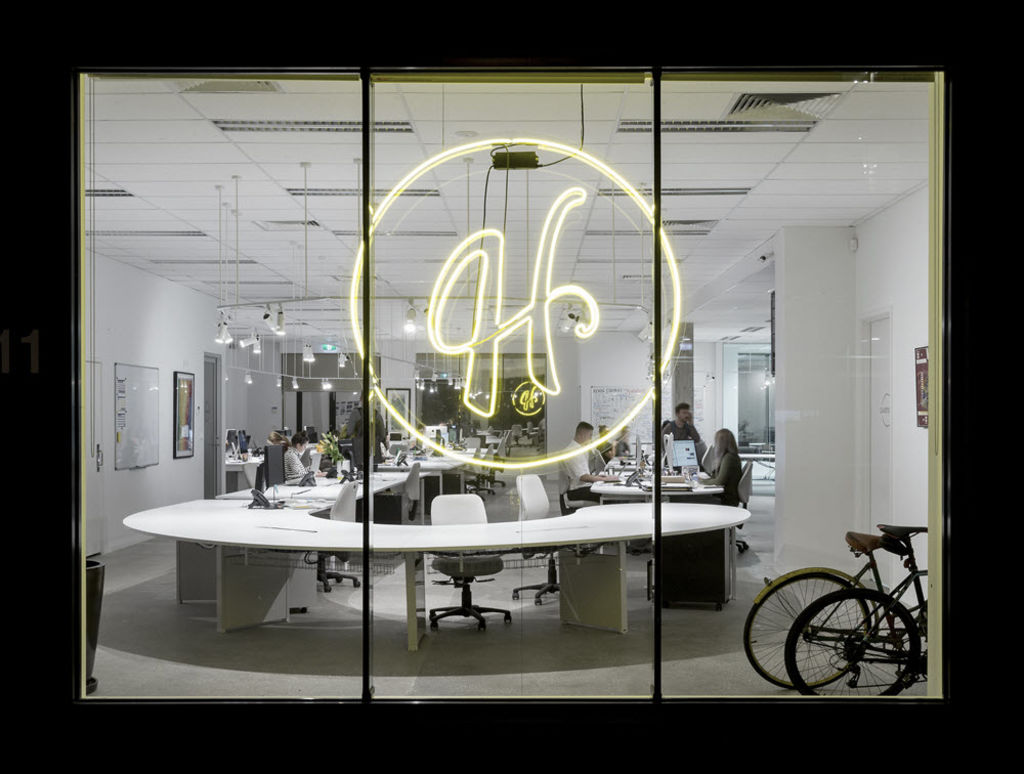
Why our company decided to keep its office space despite being much more profitable working from home
The lights aren’t on at Hardhat’s gleaming street-fronted Prahran office, and everyone is working at home.
The only life force remaining are the office plants. Yet prior to the lockdowns our team of 40 creatives, strategists, makers and account managers worked side by side at a gigantic white desk that snakes through our entire office, seating everyone from interns to owners.
It’s a desk custom-built for collaboration, and teams work in project clusters usually “warm-desking” for 12 to 18 weeks, making for an incredibly tight-knit team.
Now our staff are scattered to the winds around Melbourne and its surrounds, connecting creatively by dropping into a Google Hangout or a Zoom meeting.
However, by many relative measures, we are more successful and productive than ever. After the sudden and significant drop in March and April, profitably is up, revenue is climbing, our client win-rate is flourishing and the calibre of work is excellent. We’re even hiring.
As an independent agency, after our staff, our largest business expense is our office space.
The question of whether we should sublet our office and continue to work remotely has become a hotly debated topic in our leadership group.
At the start of the first lockdown in March, after the sudden and significant drop to our bottom line and being faced with the crippling pressure of not wanting to cut staff, giving up our office still felt like an incredibly drastic action.
What sort of creative agency doesn’t have an office? And what about the five-year lease extension we’d literally just signed?
Now in the midst of lockdown 2.0 and with no end in sight, the conversation has turned far more pragmatic.
To take a narrow view, naturally, with our improved business performance, you’d have to ask as to whether it is necessary to continue to spend $25,000 per month on an office space that acts merely as a glorified PO box?
Our office feels redundant, a relic from the past even though just six months ago it was our beloved home base where our team came together to execute campaigns and platforms in a full-bodied creative swing.
Now the overriding sentiment appears that no one is particularly fussed if we ever return to the office, despite our strong collaborative culture, indoor basketball court and fully stocked whisky bar.
Surveying our staff, the majority say they love working from home and avoiding crowded commutes into the office. There are a plethora of factors at play here, including health concerns, child care and work-life balance.
By the same token, our clients don’t seem to care whether we have a physical office or not either. Six months ago, I could never have imagined this would be the case.
For all of us, working from home has become “the new normal”. What we fail to account for, however, is that it’s not normal by choice; it’s normal by government decree.
I’m sorry to impart the news that the feelings we’re experiencing about how fantastic it is are a form of synthesised happiness.
While just as “real” as natural happiness, synthesised happiness is what we create to keep ourselves moving, even when we don’t actually get what we want.
For example, “Missing out on that promotion was exactly what I needed right then.”
So with a little bit of preemptive hindsight, it’s not hard to imagine how “I love working from my bedroom and only communicating with people through Zoom” will fit this mould.
Things get really tricky when our synthesised happiness meets a behavioural quirk known as projection bias.
Projection bias is what causes us to assume that our future selves will have the exact same set of tastes, preferences and priorities that our current selves do.
It is underpinned by a subtle, yet powerful arrogance, causing us to see no reason why a future version of ourselves would be any different to the current one. This shortcoming is what Carnegie Mellon University psychologist George Loewenstein labelled the “intrapersonal empathy gap”.
It’s projection bias that has us thinking this will be forever. It’s our intrapersonal empathy gap making us believe that we’ll always be happy working like this, that we’d be crazy to hang on to an oversized office, and that the only thing worth investing in is more activewear.
The rational, pragmatic measures stack up. The numbers are good. The widgets are getting made. The invoices are going out. The money is coming in.
Unfortunately, our work, our lives and our livelihoods are more than just a set of rational, pragmatic numbers.
There are no hard metrics to measure how connected our team feels to one another, or the agency as a whole.
There are no numbers that highlight how many great ideas, informed by a throwaway comment in the office kitchen, never happened.
There’s no data to show how many development opportunities juniors miss, because they’re not within earshot of experienced leaders and mentors.
At the moment, the norm is to work from home. Ultimately though, this crisis will pass. The restrictions will lift. The choice of where to work will return. And there’s no doubt in my mind that when it does, we’ll be back to “office as the norm” in no time.
No matter how democratic or non-hierarchical we perceive our workplaces to be, there will always be people we look up to, respect, admire and report into.
Once a leader (official or otherwise) decides to spend time back in the office, they will inevitably draw followers back in too. The same goes for clients, and the signals their return to the office sends to their agency partners, whether intentional or not.
It’s natural – especially for the ambitious among us – to value proximity to power. This closeness creates visibility and salience, which in the corporate world tend to accompany opportunities and recognition.
Pragmatically, we can pitch for new business via Zoom, but I pity the agency that thinks it can be just as compelling in 2D.
Every person that heads back in, even just for a day or two, nudges our “social norms” back in the direction of “office as default”.
It’s inevitable that before long, a critical mass will be back to daily commuting, even if the hours are slightly staggered and the “flexible working programs” get a little more flex.
The unavoidable consequence of this will be the relegation of those still Zooming in their sweatpants to an outlying, self-selected, inherently disadvantaged minority.
So for now, I’m at peace with begrudgingly holding on to an expensive, empty office for the next six months or longer, knowing that at some point very soon – when we’re all back in there – we’ll be delighted that we did.
While Zoom is a fantastic upgrade to a phone call, it’s never going to be a suitable downgrade to an in-person meeting.
Dan Monheit is co-founder of Hardhat and an expert in behavioural science.

